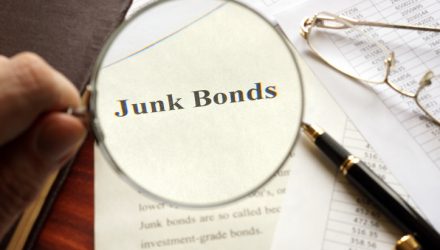Speculative-grade debt and junk bond exchange traded funds have strengthened as investors search for higher yielding assets in a low-rate environment. However, the greater demand has depressed yields, and some observers warn that high-yield debt may not be worth the greater risks.
Lower volatility, a sanguine interest rate environment and investors’ thirst for yield are among the factors helping exchange traded funds such as the iShares iBoxx $ High Yield Corporate Bond ETF (NYSEArca: HYG), but some market observers are urging a cautious approach to high-yield corporate bonds. Still, income investors may find junk yields too hard to resist.
“The yield on U.S. high yield has slipped as spreads have compressed. At 5%, high yield does not seem to offer particularly generous returns, especially when you consider that the long-term average is closer to 10%. Still, a 5% yield looks enticing given the alternatives in other bonds,” according to BlackRock.
Fueling the increased demand for debt assets, tumbling yields on safer government and corporate debt pushed investors towar riskier and higher yielding debt, like junk bonds. Furthermore, U.S. corporate bonds are enjoying a stronger tailwind in an environment of strong economic growth, healthy earnings and dropping default rates.
“As with stocks, high yield bonds have had a remarkably quiet year,” said BlackRock. “According to Bloomberg, trailing 30-day volatility on two popular high yield ETFs is below 3%. Longer-term measures of volatility are also compressed. This is important. Low expected or ex-ante volatility historically translates into a high expected Sharpe Ratio. In other words, with realized and expected volatility unusually low, high yield appears attractive on a risk/return basis.”
